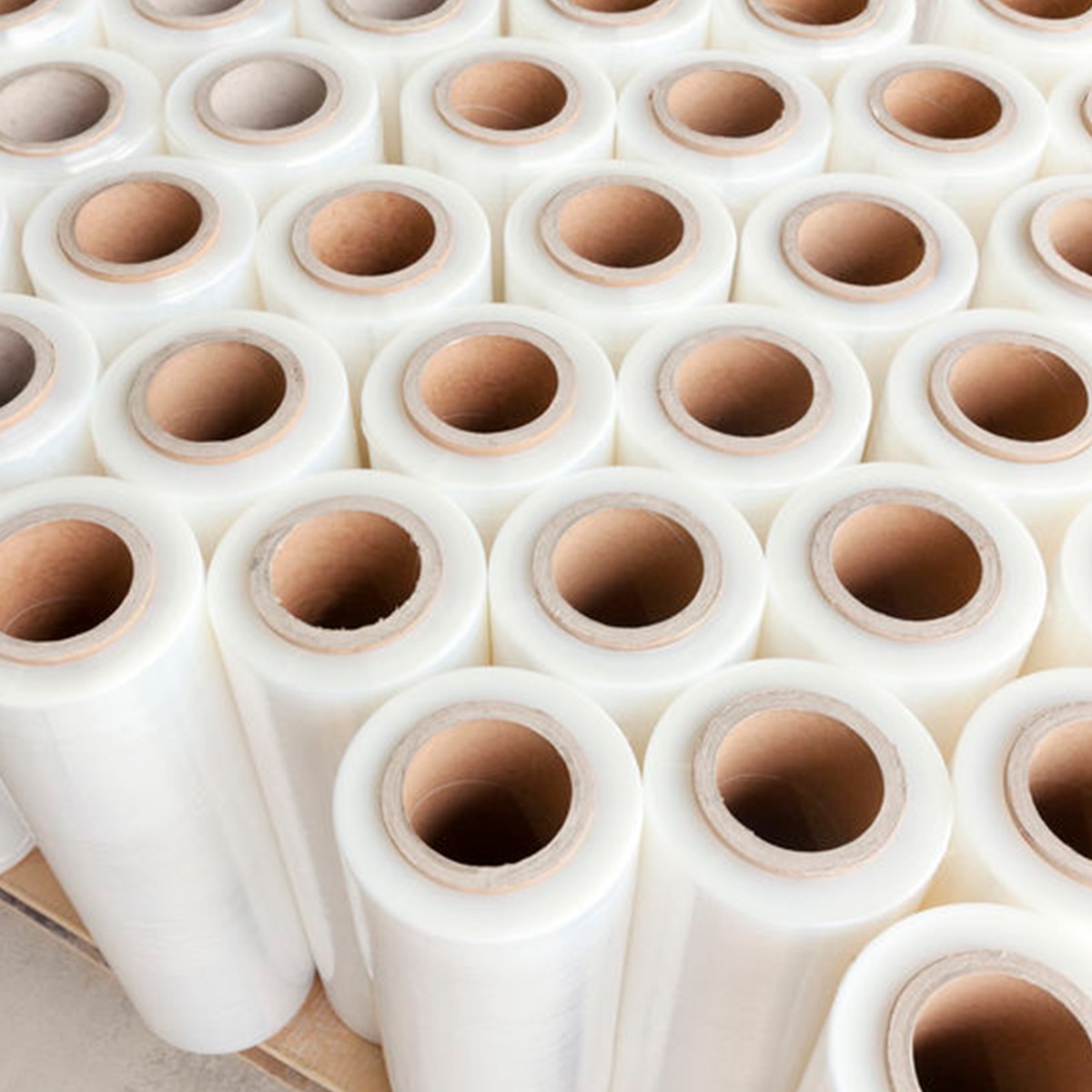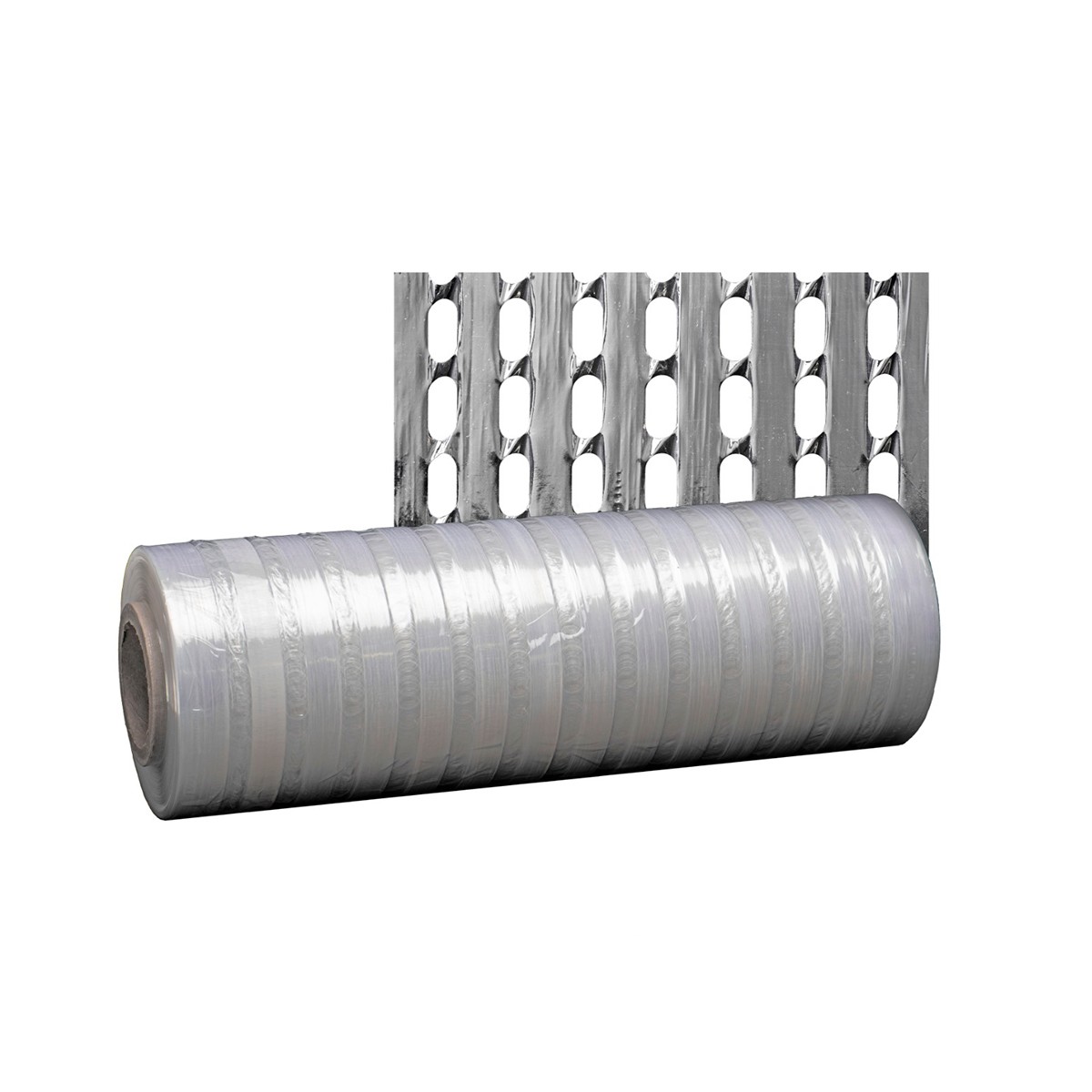
Stretch Film
Stretch film for manual use and for automatic installations. We have rolls of different sizes and thicknesses (with and without cardboard tube) in transparent, white and black. Stretch film in all its varieties are available from stock for immediate shipment.
Si tienes alguna duda sobre los tipos de film, en este
vídeo te lo explicamos todo ¡dale al play!
Preguntas frecuentes
Stretch film is a thin, highly elastic plastic wrap (usually made of polyethylene) primarily used for wrapping products for shipping and transport. As the film is applied around a load, tension is created, allowing it to stretch up to 300% of its original length.
This tension generates a holding force around the load, securing the items in place. The film sticks tightly to itself, ensuring the products are well-bound. It can also be used to wrap small items, not just large pallets.
Six key benefits of stretch film:
-
Protection: Keeps products safe from moisture, dust, and dirt. Some films offer UV protection, shielding loads from weather conditions. It also helps deter theft by making access more difficult.
-
Damage reduction during shipping: Possible damage is minimized as the tightly wrapped loads don’t shift during transport.
-
Cost-effective: More affordable than strapping tape or shrink wrap. Wrapping machines are also less expensive, and manual application is possible.
-
Easy to wrap: Contents are visible, aiding in storage and transport, or can be opaque for discreet packaging.
-
Versatile: Easily adaptable to different load types. Suitable for wrapping irregular or hard-to-stack items.
-
Sustainable: Many stretch film types are recyclable.
There are various types and thicknesses of stretch film available on the market to meet specific packaging needs depending on the type and size of the load. Key factors to consider when choosing the right stretch film include:
-
The stability level of the load.
-
Sharp edges or protrusions that could tear the film.
-
Special requirements (UV resistance, food-grade use, etc.).
Manual stretch film is made exclusively for hand wrapping. It is also known as hand film or hand pallet wrap. It is commonly used by companies wrapping small volumes of products (less than 50 pallets per day).
Rolls of hand-wrapping film are smaller and lighter because they need to be easily handled. These films are usually used when the weight of the item is not very heavy, nor particularly fragile, as if not done properly, they can cause damage to the wrapped items.
They are available in two formats:
● Manual stretch film without mandrel. The cardboard inner tube is avoided, so the roll weighs less and no waste is generated. Coplasem provides an applicator and thus avoids the use of gloves without hurting your hands.
● Manual stretch film with mandrel. With standard cardboard tube inside.
The difference with manual stretch film is that we have to use machinery for its use. It is normally used in high volume packaging operations. Some of the advantages compared to manual stretch film:
- Reduction of material costs.
- Ease of use and security.
- Faster and more efficient.
- Increased load containment.
The automatic stretch film is wrapped around a pallet with a machine. The film is held and wrapped around it with a rotating arm. It can also be done the other way round, with the pallet rotating and the film standing still.
Some common types of stretch film for automatic use:
Cast stretch film. Also known as cast film cast or cast wrap. These films unwind noiselessly. It is manufactured by cast extrusion. This treatment makes them very clear, allowing objects to be seen without the need for unwrapping. This film stretches more easily because the molecules are aligned when extruded. But it does not have as robust a stretch memory as other films, although it does have excellent tear strength.
It adheres on both sides, allowing the wrapped product to remain tightly wrapped. It is more cost effective than blown film.
Blown stretch film. It is manufactured by a blown extrusion process. This process involves blowing heated resins into a bubble. The bubble is transformed into sheets which are rolled and applied to a central tube. The tube is topped with an air ring which is then blown to cool it. This cooling operation gives it greater strength and more flexibility.
Blown films provide a high degree of memory when stretched. On the downside, it is more expensive and has poorer transparency than other films. It also produces what some consider to be an annoying level of noise compared to other similar films.
Pre-stretched film. It is a film that has been pre-stretched during the manufacturing process. That is, it expands close to its breaking point before it is prepared on rolls. This film does not need as much energy as other stretch films to achieve the same wrapping strength. The consumption of pre-stretched film is typically 50% less than other films, which allows for a reduction in costs.
Los films estirables de color fueron creados para atender las necesidades de embalaje que otros tipos de films estirables no cubrían. Es perfecto para la codificación por colores de los almacenes, para el transporte internacional o para inventarios. Además son resistentes a la perforación.
El film estirable ultravioleta tiene aditivos especiales para protegerlo de la luz solar. Se utilizan cuando la carga va a estar en el exterior durante un prolongado período de tiempo o cuando la carga resulta especialmente fotosensible.
Film estirable VCI. En este caso el film es inhibidor de la corrosión por vapor, está pensado específicamente para envolver componentes metálicos y que no se oxiden. Para embalar herramientas o tuberías, por ejemplo.
Film estirable reforzado. Son films extraordinariamente gruesos, con fórmulas especialmente resistentes que se utilizan para cargas extremadamente pesadas. Por ejemplo, ladrillos o bloques de hormigón.
Film estirable ventilado. Se utiliza cuando el flujo de aire y el oxígeno es necesario para los productos que se embalan. Por ejemplo productos de panadería calientes.
Film macroperforado. Normalmente es utilizado para el transporte de plantas y flores para que puedan ser transportadas de modo seguro sin interrumpir su ciclo vital.
Film estirable NO Cling. Se utiliza para embalar productos de manera que puedan deslizarse unos sobre otros sin engancharse ni romperse. Por ejemplo alfombras.
Minifilm estirable: Su utilización es para la sujeción de pequeñas piezas en multitud de industrias (como automoción o construcción)
Hay muchos tipos diferentes de máquinas para envolver con distintos ajustes. Los ajustes correctos de la máquina son importantes cuando se trata de lograr la estabilidad del palet y la seguridad de la carga.
Otro factor a tener en cuenta de la máquina que se utiliza para envolver es cuál es la capacidad de estiramiento y cuál es la velocidad. A veces, la velocidad del proceso de envoltura puede exigir un film estirable más grueso para garantizar un alto rendimiento.
El hecho de que un palet esté envuelto y tenga un buen aspecto a simple vista, no significa que esté bien hecho o seguro. Cuando no se utiliza de modo adecuado, pueden surgir problemas durante el transporte.
Podemos elegir entre tres tipos de máquinas distintas:
- Máquina de plataforma giratoria. Utilizan una plataforma rotativa motorizada para girar los palets en su sitio. Pueden ser de formato automático o semiautomático. Para envasado de tamaño pequeño o medio, y con pocas cargas, entre 20 y 40 por hora.
- Máquina de brazo giratorio. Utilizan un brazo mecánico que gira alrededor de la carga. Para cargas muy pesadas o ligeras pero con un alto grado de inestabilidad. Pueden ser en formato automático y semiautomático. Unas 40 cargas a la hora.
- Máquina orbital de anillo horizontal. Utilizan un anillo horizontal giratorio para envolver los productos encajados en su interior. Son excelentes para envolver cargas grandes.







